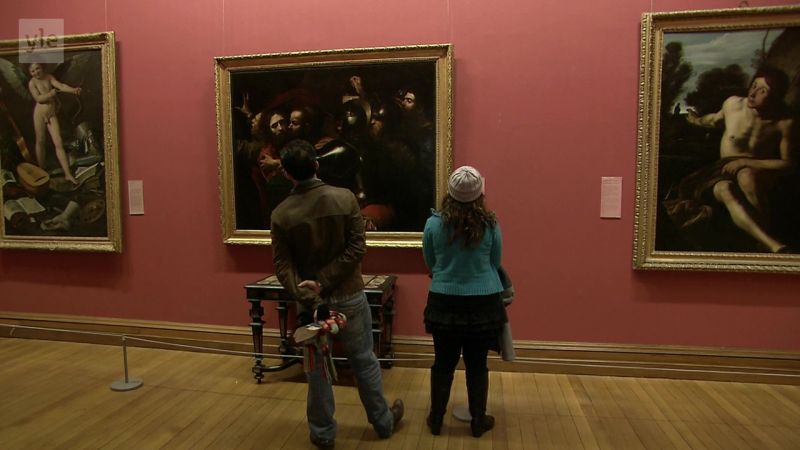The Taking of Christ: The extraordinary story of one of world’s great, lost masterpieces: Caravaggio‘s “The Taking of Christ”. This film traces the painting’s journey from its birth in Rome in 1602 to its amazing re-discovery in 1990.
“The Taking of Christ” by Italian Baroque master Caravaggio today holds pride of place in the National Gallery of Ireland in Dublin. Its subject is the arrest of Jesus, the moment when the son of God, is betrayed with a kiss – the Judas kiss. 400 years ago the painting was one of the most costly and celebrated artworks of its time, but in a confusion of discarded fashions and lost fortunes, it vanished. Its rediscovery is one of the most extraordinary detective stories in the history of art, traversing time, countries, war, social upheaval and family fortunes.
The Taking of Christ – Caravaggio
Michelangelo Merisi da Caravaggio (29 September 1571 – 18 July 1610) was an Italian painter active in Rome, Naples, Malta, and Sicily from the early 1590s to 1610. His paintings combine a realistic observation of the human state, both physical and emotional, with a dramatic use of lighting, which had a formative influence on Baroque painting.
Caravaggio employed close physical observation with a dramatic use of chiaroscuro that came to be known as tenebrism. He made the technique a dominant stylistic element, darkening shadows and transfixing subjects in bright shafts of light. Caravaggio vividly expressed crucial moments and scenes, often featuring violent struggles, torture and death. He worked rapidly, with live models, preferring to forgo drawings and work directly onto the canvas.
His influence on the new Baroque style that emerged from Mannerism was profound. It can be seen directly or indirectly in the work of Peter Paul Rubens, Jusepe de Ribera, Gian Lorenzo Bernini, and Rembrandt, and artists in the following generation heavily under his influence were called the “Caravaggisti” or “Caravagesques”, as well as tenebrists or tenebrosi (“shadowists”).




